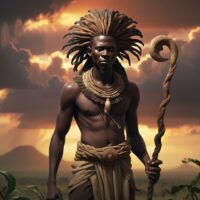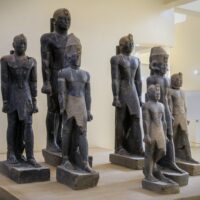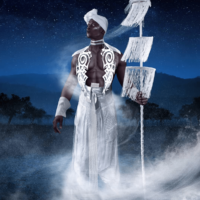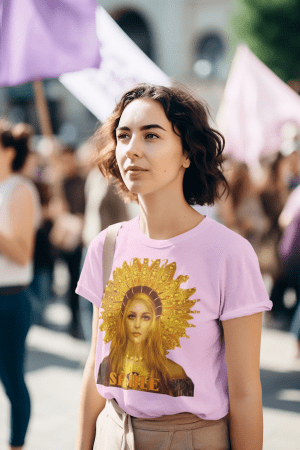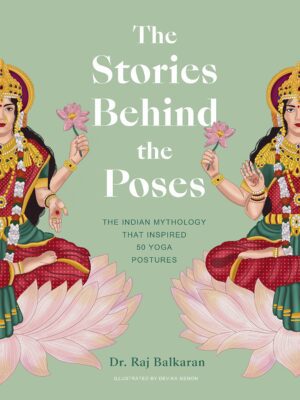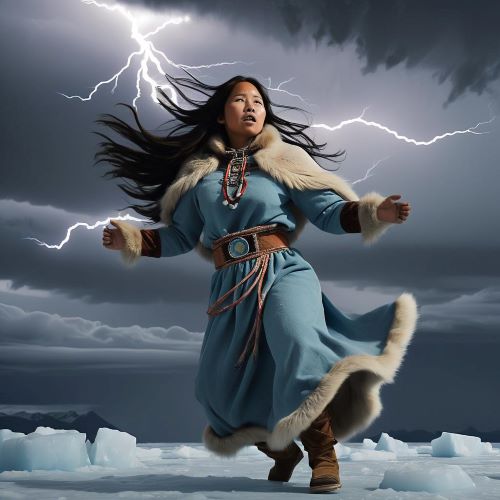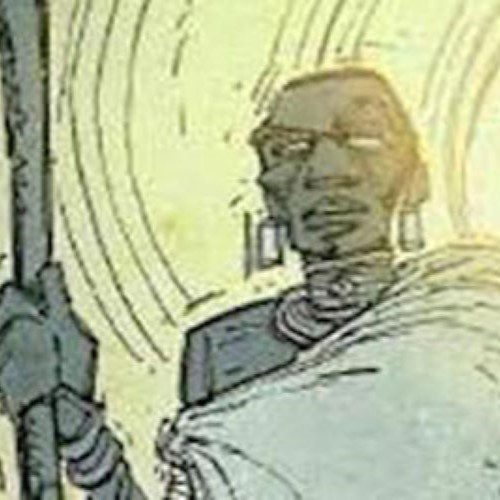Kwoth : The Divine Protector
Listen
At a glance
| Description | |
|---|---|
| Origin | Other East African Mythologies |
| Classification | Gods |
| Family Members | N/A |
| Region | South Sudan, Sudan, Gambella |
| Associated With | Creation, Shapeshifting |
Kwoth
Introduction
In East African mythology, Kwoth is a figure of deep reverence and mystery. Known as the supreme omnipresent and creation god among the Nuer people of South Sudan and Gambella, Kwoth’s tale embodies intrigue and omnipresence. The mythology of East Africa is rich with a diverse array of deities and legendary figures, each enriching the cultural and spiritual fabric of the region. Standing prominently among these divine beings is Kwoth, celebrated for his role as a protector and provider, embodying strength, wisdom, and resilience within the folklore of multiple East African communities. East Africa’s mythological heritage is a treasure trove of tales passed down through generations by storytellers, weaving narratives of deities, heroes, and mythical creatures. Yet amid this diversity, Kwoth remains a figure of enigmatic obscurity, distinct from well-known figures like Anansi, the West African trickster god.
Physical Traits
Kwoth, unlike many gods in mythology, lacks a tangible physical form that can be easily described. He exists as an unseen, omnipresent deity, simultaneously everywhere and nowhere, imbued within everything yet impossible to discern. This ethereal quality deepens the mystery surrounding Kwoth. While some depictions portray him as a towering figure exuding authority and strength, with a majestic mane symbolizing his bond with nature, his physical appearance remains elusive. References hint at possible animalistic features, underscoring his connection to specific creatures, but concrete details about Kwoth’s form are scarce, further shrouding him in enigma.
Family
In East African mythology, Kwoth is often integrated into a divine family or pantheon, sometimes depicted as a sibling or descendant of prominent gods and goddesses. This representation underscores themes of lineage, inheritance, and the continuity of divine powers through generations, enriching Kwoth’s character and mythological significance. However, details about Kwoth’s family remain elusive. While certain narratives hint at associations with specific deities, these connections remain unconfirmed, contributing to the mystery surrounding his origin. Despite being recognized as the supreme god, Kwoth is not traditionally depicted with a family. Yet, among the Nuer people, other deities such as Kuth Nhial and Kuth Piny are considered manifestations of Kwoth, further emphasizing his omnipresence and spiritual influence.
Other names
Kwoth is also recognized as Kuoth Nhial among the Nuer people, denoting the supreme god within their mythology. The use of different names like Kwoth and Kuoth Nhial reflects diverse aspects and manifestations of this omnipresent deity. The variation in names might also signify regional distinctions, suggesting that Kwoth could be known by different names across various East African cultures. This diversity underscores the fragmented nature of East African mythology, where stories evolve and transform as they traverse different communities. Across East Africa, Kwoth is referred to by various names such as Kwot, Kwo, or Kwotho, each name encapsulating unique facets of his character and attributes. These alternate names not only enrich the mythology surrounding Kwoth but also demonstrate the fluidity and adaptability of oral traditions within East African folklore.
Powers and Abilities
Kwoth, known as the “Spirit of the Sky,” holds a central role in East African mythology as a deity believed to govern celestial phenomena and the creation of humanity. Revered for his ability to bridge the realms of heaven and earth, Kwoth is attributed with significant powers that extend beyond mere creation. Legends depict him as a formidable protector, wielding control over elements of nature to shield communities from harm and adversity. Among his attributed abilities are mastery over weather patterns, influence over wildlife, and the capacity to bestow blessings upon those who worship him. Kwoth’s portrayal as a guardian figure underscores his importance in the spiritual and cultural landscape of East Africa.
Various narratives offer glimpses into Kwoth’s intriguing character, depicting him with a range of potent abilities that blur the lines between human and divine. Shapeshifting features prominently in tales, suggesting Kwoth’s capacity to transform into different animals, embodying aspects of nature and wildlife. Additionally, stories highlight his command over natural forces, with accounts of rain-summoning, storm-controlling, and potential drought-inducing abilities, indicating a role as a deity closely linked to environmental phenomena. Kwoth is also portrayed as a cunning trickster figure in some traditions, using cleverness and deception to navigate challenges and outmaneuver adversaries, adding depth to his multifaceted persona.
Despite Kwoth’s significance in East African mythology, his exact nature and divine status remain subject to interpretation and debate. Scholars and storytellers grapple with the ambiguity surrounding Kwoth’s identity, questioning whether he represents a truly divine being or a figure embodying extraordinary human-like abilities. Some theorize that Kwoth could be a composite entity, synthesized from a blend of regional myths and legends over time. Others suggest he may be a forgotten deity, his true story obscured by the passage of time and evolving oral traditions. The enigmatic nature of Kwoth’s existence adds layers of complexity and intrigue to the rich tapestry of East African folklore, inviting further exploration and interpretation.
Modern Day Influence
Kwoth’s influence in modern times is most notably evident in the religious customs of the Nuer people, who continue to venerate his manifestations through rituals involving sacrifice and prayer. For example, upon the passing of a Nuer individual, an ox is ceremonially slaughtered as an offering to Kwoth, believed to escort the deceased’s spirit to the afterlife. This enduring tradition reflects the profound reverence and respect the Nuer hold for Kwoth as an omnipresent deity within their cultural framework.
Despite the relative obscurity surrounding Kwoth in broader African mythology, his legacy may subtly resonate in contemporary African cultures. The concept of a powerful figure commanding dominion over nature aligns with the profound reverence many African societies demonstrate towards the environment. Moreover, parallels can be drawn between the theme of trickery attributed to Kwoth and the renowned West African trickster deity Anansi, suggesting potential cross-cultural influences and shared narrative motifs waiting to be explored through further research.
Over time, Kwoth’s legacy has persisted as a symbol of resilience and unity within modern East African society, inspiring various forms of artistic expression, literature, and cultural festivities. His imagery and mythology have found new life through reinterpretation in literature, visual arts, and music, reflecting his enduring relevance. Additionally, Kwoth’s role as a protective guardian figure continues to resonate with themes of community solidarity and environmental stewardship, offering cultural touchstones for navigating contemporary challenges and reinforcing communal values.
Related Images
Newest addition
Frequently Asked Questions
What is lorem Ipsum?
I am text block. Click edit button to change this text. Lorem ipsum dolor sit amet, consectetur adipiscing elit. Ut elit tellus, luctus nec ullamcorper mattis, pulvinar dapibus leo.
What is lorem Ipsum?
I am text block. Click edit button to change this text. Lorem ipsum dolor sit amet, consectetur adipiscing elit. Ut elit tellus, luctus nec ullamcorper mattis, pulvinar dapibus leo.
What is lorem Ipsum?
I am text block. Click edit button to change this text. Lorem ipsum dolor sit amet, consectetur adipiscing elit. Ut elit tellus, luctus nec ullamcorper mattis, pulvinar dapibus leo.
What is lorem Ipsum?
I am text block. Click edit button to change this text. Lorem ipsum dolor sit amet, consectetur adipiscing elit. Ut elit tellus, luctus nec ullamcorper mattis, pulvinar dapibus leo.
What is lorem Ipsum?
I am text block. Click edit button to change this text. Lorem ipsum dolor sit amet, consectetur adipiscing elit. Ut elit tellus, luctus nec ullamcorper mattis, pulvinar dapibus leo.

